Trego
Trego is the location of a former station on the Western Pacific Railroad and a current siding. Trego Hot Springs is located about 2 miles northeast of Trego on the railroad tracks.
The name "Trego" dates from the 1910's, just after the railroad was built. Previously, the springs had names like Hot Springs, Kyles Hot Springs (1864), Butte Spring, and Butte Hot Spring.
Today, Trego is best known for its hot springs, which is a long ditch with a mud bottom. The springs are at the north end, near the railroad tracks, and the water flows south. Garside reports that the springs have a temperature of 187F.
The area near the springs were seasonally occupied from 4000 B.P. and 1000 B.P.
Fairfield states that in 1856, Ladue Vary and Fred Hines discovered the springs that were later named Trego when they took a short cut from Granite Creek (now known as Granite Ranch) across the playa towards Rabbit Hole Spring. When they arrived at the Humboldt River, the met a wagon train on the Nobles Trail. Vary and Hines told the emigrants about the spring, and the emigrants took the shortcut and the Nobles trail was adjusted accordingly. "Hot Spr" appears on the 1857 map "Map of the Western Division of the Fort Kearney South Pass and Honey Lake Road" at that location. (Ladue founded Deep Hole in October of 1856 and then later founded Varyville).
An 1857 map has the label "Hot Spr" at the location of Trego.[1]
The 400 foot long trench was initially hand dug by a group led by Frederick_W._Lander in 1860.
Amesbury reports two 1861 entries from the diary of Edith Lockhart:
"August 18: Pleasant day. Started at noon and went 18 miles to Rabbit Hole Springs, rested a couple of hours and went 18 more miles by the next day to Hot Springs."
"Aug. 19. A warm day - got into camp at 10 oclock in this morning, laid over till evening - when we went 12 miles to Granite Creek or Wells."
In June 1864, Company D of the Nevada Volunteer Calvary passed through Rabbit Hole Spring and then traveled twenty miles to "Hot Springs, now another Western Pacific Railroad village."[2]
The Spring City Post Office was possibly in operation at this location from 13 June 1866 to 4 Oct 1866 and then the name was changed to Hot Springs Post Office from 4 Oct 1866 to 6 Aug 1867.[3][4] However, Spring City Post Office could have been at Double Hot Springs, see Hot Springs Post Office.
"Hot Spr. Sta" appears in an 1876 map.[5]
The area was named Trego around the time the railroad came through. Carlson and Basso state that Trego was named after nearby Mount Trego, which is formally known as Old Razorback Mountain. The name Mount Trego appears on the Pershing County Assesors Map and on the 1968 and 1971 NV DOT Maps. The earliest citation for Trego is a Railroad timetable and map that that mentions Trego and that states that "Through passenger service between San Francisco and Salt Lake City will take place August 22, 1910." An April 29, 1912 newspaper article that states that "" Borax" in the water from Trego was the cause of a train engine boiler explosion that killed three people.
The 1914-1915 WPRR Descriptive Time Table states: "Queer hummocks are scattered over the surface and not far from the tracks at Trego, formerly Trego Springs, are the Double Hot Springs, steamy in winter. The old overland trail passes here. The sharp bluish spurs of the Granite Range, soon to be crossed, are plain ahead on the right. From the Granite Range will be sighted California"[6] Double Hot Springs are many miles from Trego.
In 1920, a man was murdered at Trego.[7][8]
In February, 1921, three unidentified bodies were buried at Trego. In June, 1922, there was interest in these bodies when a few weeks prior a body was discovered in a shallow grave near Gerlach. Joseph Romeros was convicted in the Gerlach killing.[9][10]
In 1994, Desert Siteworks was held at Trego. Desert Siteworks was a series of art events led by William Binzen, assisted by Judy West and John Law from 1993 to 1996. Desert Siteworks sometimes coincided with Burning Man, and many of the principles developed at Desert Siteworks (such as Leave-No-Trace) were adopted by Burning Man.
Unlike nearby Frog (Garrett Ranch) Springs, Trego is on public land.
In 2020, the BLM posted an article that stated "The spring water has tested positive for E. Coli, Fecal Coliforms and Vibrio Cholera. The public is advised to avoid bathing or any type of contact with the spring water. Spring waters generally become contaminated when exposed to wildlife and livestock."
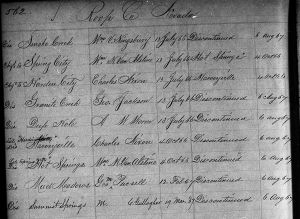
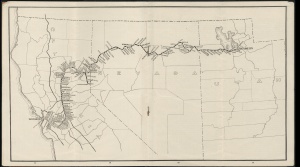
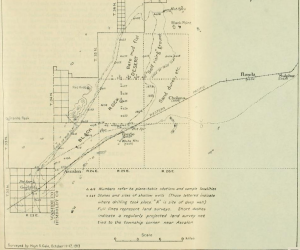
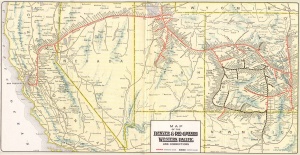
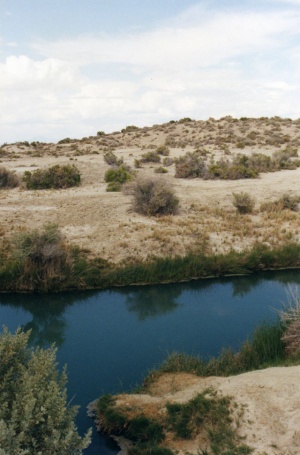
See Also
External Resources
- U.S. Geological Survey Geographic Names Information System: Trego
- Citation: U.S. Geological Survey. Geographic Names Phase I data compilation (1976-1981). 31-Dec-1981. Primarily from U.S. Geological Survey 1:24,000-scale topographic maps (or 1:25K, Puerto Rico 1:20K) and from U.S. Board on Geographic Names files. In some instances, from 1:62,500 scale or 1:250,000 scale maps.
- Variant: Trego Siding. Citation: Garside, L. J. and Schilling, J. H. 'Thermal Waters of Nevada' Reno: Nevada Bureau of Mines and Geology Bulletin 91, 1979, 163 pp. Describes hot springs and hot water seeps of Nevada with location information and map at 1:1,000,000. p60
- Note that the latitude and longitude indicated by GNIS for Trego is located on the playa surface and is thus probably incorrect. The Trego 1:24,000 1980 Map shows Trego to be on the south side of the railroad tracks, near the crossing of the the road to Frog (Garrett Ranch) Springs. Note that Trego Hot Springs 1:24,000 map is a separate map.
- U.S. Geological Survey Geographic Names Information System: Trego Hot Springs
- Citation: U.S. Geological Survey. Geographic Names Post Phase I Map Revisions. Various editions. 01-Jan-2000.
- Variant: Butte Hot Spring. Citation: Garside, L. J. and Schilling, J. H. 'Thermal Waters of Nevada' Reno: Nevada Bureau of Mines and Geology Bulletin 91, 1979, 163 pp. Describes hot springs and hot water seeps of Nevada with location information and map at 1:1,000,000. p60
- The 1881 Gibbs map of California and Nevada and the 1893 Rand McNally map indicate that "Boiling Butte" might be another name for Old Razorback Mountain. The 1893 Rand McNally Map also shows "Boiling Spr" NE of Boiling Butte.
- Butte Spring. Citation: Garside, L. J. and Schilling, J. H. 'Thermal Waters of Nevada' Reno: Nevada Bureau of Mines and Geology Bulletin 91, 1979, 163 pp. Describes hot springs and hot water seeps of Nevada with location information and map at 1:1,000,000. p126
- Albert C. Peale, M. D., "List and Analyses of Mineral Springs of the Unites States, p. 327, 1886. "Butte Spring, north end of Hot Springs, Butte, Humboldt County." 182F. (Is this the same place? Pershing County was formed in 1919 from Humboldt County, so it could be the same place
- Kyles Hot Springs. Citation: Sacramento Daily Union Newspaper, August 26, 1864. Letters from Nevada Territory (by G.K.G.)
- Note that there is modern day U.S. Geological Survey Geographic Names Information System: Kyle Hot Springs near Unionville, NV.
- Kyles Hot Springs was possibly named after Charles Kyle, who was among the people who paid Nobles $2000 to guide their group in 1852 Fairfield, p. 18.
- Fairfield p. 372 discusses the Granite Creek murders and states "Charles Kyle and family with their stock and all other settlers thereabouts left their homes and came this way." (source: The Humboldt Register Published at Unionville Nevada of April 15 1865)
- The 1870 census puts a stock raiser named Charles Kyle in the Buena Vista Township in Humboldt County, which is quite close to the Kyle Hot Spring near Unionville.
- Albert C. Peale, M. D., "List and Analyses of Mineral Springs of the Unites States, p. 372, 1886, states that there was a resort at Kyle's Hot Springs 12 to 15 miles east of Star Peak, Humboldt County.
- Trego Hot Spring. Citation: Garside, L. J. and Schilling, J. H. 'Thermal Waters of Nevada' Reno: Nevada Bureau of Mines and Geology Bulletin 91, 1979, 163 pp. Describes hot springs and hot water seeps of Nevada with location information and map at 1:1,000,000. p60
- Helen S. Carlson, Nevada Place Names: A Geographical Dictionary," p. 234. The entry for Trego says that Trego is at the foot of Mount Trego. Carlson cites:
- Carlson cites Trego, Robert, "Black Rock Desert Roads," Nevada State Journal, October 23, 1955, p. 10-11. Low resolution image of Trego Station, Robert Trego states that there were two houses in 1955. Also mentioned are Sulphur and Jungo.
- Carlson cites "General Highway Maps. Prepared by Nevada State Highway Department, Planning and Survey Division, in cooperation with U.S. Department of Commerce, Bureau of Public Roads 1959-1971 (GHM)," p.260.
- Pershing County Road Map, 1954. Shows Trego.
- Pershing County," Nevada Department of Transportation, 1968. Shows "Mt. Trego".
- Dave Basso, "Ghosts of Humboldt Region," p. 133, 1970. States that it was named Trego for a nearby peak.
- | Nevada DOT 1971 Atlas (Pershing County Field Data 1965) shows "Mt. Trego".
- Regina C. Smith, Peggy McGuckian Jones, John R. Roney, Kathyrn E. Pedrick, "Prehistory and history of the Winnemucca District," BLM, 1984:
17. 26Pell8, Trego Hot Springs
The Nevada State Museum surveyed 86 miles along a proposed Bell Telephone undergound route in 1971. Among the sites found during this survey was 26Pell8, a major occupation site near Trego Hot Spring. Test excavations showed signif- icant depth and cultural features. Nevada Bell funded large-scale excavations by the Nevada State Museum under the field supervision of James Toney in 1972. Some further field work was done in 1973.
The first published report of this site was by Jonathan Davis and Robert Elston (1972) who described its stratigraphy. They interpreted the startigraphy in terms of climatic variables. Sometime before 3300 B.P. a deep lake occupied the playa. The lake receded during a dry interval (possibly the Al ti thermal ) . Between 3300 and 1400 B.P. moister conditions produced an ephemeral lake, and the major occupation of 26Pell8 occurred at this time. Around 1400 B.P. the climate again became drier, then moister again, and, finally, the dry conditions which prevail today were established.
In 1980 Susan Seek completed a comprehensive report on 26Pell8. She listed the radiocarbon dates, which ranged from 3810 B.P. to 1120 B.P. (Valastro, Davis, and Varela 1979), and related them to the climatic and cultural sequence. Cultural features and artifacts from the site were described in her report which also included a number of specialists ' appendices (Clark 1980; Danise 1980; Davis 1980; Rosen 1980; Stearns 1980; and Wright 1980). Seek concludes that 26Pell8 was occupied between 4000 B.P. and 1000 B.P. Plant foods, jackrabbit, and cottontail seemed to be emphasized. The occurrence of semi -permanent structures suggests extended occupation and Seek concludes that 26Pell8 was a summer camp from which people exploited lacustrine resources on the now dry playa.
Collections and Archive Materials
Nevada State Museum
Selected References
Clark, W.H. 1980 Dansie, A. 1980 Davis, J.O. 1977a, 1977b, 1980 Davis, J.O. and R. Elston 1972 Jensen, A. 1975 Seek, S.M. 1980 Stearns, S. 1980 Toney, J. 1971, 1973 Valastro, S., Jr., E.M. Davis, and A.G. Varela 1979 Wright, C. 1980 Rosen, M.D. 1980
- Mary Rusco, "How Much is History Worth?", Nevada Archaeologist, Vol01 1972. Probably description of 26Pel8.
- nbmg.unr.edu/geothermal Trego Hot Springs
- google map
- yahoo map
- terraserver
- Nobles Trail (Emigrant Trails West) "Trego Springs - Marker N-4"
- Robert Amesbury, "Nobles Emigrant Trail," 1967. p. 16 contains Edith Lockhart's journal entries and states that Landers dug the ditch.
- Asa Merrill Fairfield, "Fairfield's Pioneer History of Lassen County, California," 1916.
"In 1853 when he was seventeen years old Fred Hines crossed the plains with Dr Minor. He passed through this valley over the Noble road and went on to Shasta and mined there until July 1856. Then he Ladue Vary and A U Sylvester came to this valley; Vary to prospect, and the others to trade with the emigrants. They went out to Lassen's Meadows on the Humboldt and stayed there until the last of September or the first of October. During that time Hines and Vary came back to Deep Hole springs with a pack train. When they went back Hines concluded to go straight across from Granite creek to Rabbit Hole and save a good many miles of travel. They did this and about midway between the two places found some hot springs. Shortly after they got back to the Humboldt an emigrant train came along. They were going over the Noble road and Hines told them how to keep his trail and find the hot springs. They followed his directions and made a new road which was traveled after this instead of the old one."
Origin of Trego
Trego is named after the Western Pacific Railroad siding. But who was Trego?
- A Photo Tour to California Via the Nobles Trail "Trego Hot Springs", "It was night when I saw the springs and therefore could not have a good view of them although I had the sense of feeling and the water one could keep warm [in] comfortably especially if he should be fortunate enough to tumble into the seething cauldron for I could compare it to nothing else..." -- "Mary C. Fish, 1860"
- Nevada Outdoor School, "Trego Hot Springs." While the Nobles Trail was being improved, Trego Hot Springs was discovered. This source says that the springs were once called "Hot Sulphur Springs." Presumably, this is different than the Hot Sulphur Springs near Tuscarora.
- Devere Helfrich, "Emigrant Trails West: A Guide to Trail Markers Placed by Trails West, Inc. Along the California, Applegate, Lassen, and Nobles' Emigrant Trails in Idaho, Nevada, and California," Arrival at "Hot Sulphur Springs." Description of Trego marker. Description of Frederick W. Lander's improvements.
- Peggy McGuckian Jones, "Emigrant Trails In the Black Rock Desert, Technical Report No. 6," 1980, BLM:
- "In 1856 the Nobles' Route was shortened by the discovery of the Hot Springs at Trego. Subsequently, wagon traffic went directly from Rabbit Hole Springs to the Hot Springs at Trego, and across the desert to Granite Springs, bypassing the long dry stretch between Rabbit Hole and Black Rock Springs entirely."
- "At Trego Hot Springs a large reservoir was built and water in the springs diverted so that it would cool in the process of running to the tank."
- Dave Basso, "Ghosts of Humboldt region: a glimpse into Pershing County's past," 1970. "Named for a nearby peak". Presumably Old Razorback Mountain, see that page for links about Mount Trego.
- Reno Evening Gazette, Tuesday, June 6, 1922, Page 6 "The discovery of the bones of three bodies in a shallow grave near the Western Pacific tracks at Trego"
- Albert Trego was involved with the Denver and Rio Grande Railroad Company and the WPRR. http://www.wplives.com/ states that funding for the WP was provided by the Denver and Rio Grande Railroad Company.
- Irma S. Russell, Arthur J. Russell, Jr., "The Political and Administrative History of the U.S. Court of Appeals for the Tenth Circuit Court", January 1, 1982. April 1, 1929, Albert Trego of Denver appointed clerk of the Tenth Circuit Court, Denver.
- H.V. & H.W. Poor, "Poor's Manual of Railroads," Volume 54, 1921. Albert Trego is a member of the Board of Directors of the Western Pacific Railroad (Denver).
- Henry Varnum Poor, "Poor's Manual of Railroads, Volume 53," 1919? A transaction involving WPRR: "Albert Trego, Real Estate Agent."
- "Annual Report, Denver and Rio Grande Railroad Company," 1913. Albert Trego, Real Estate Agent.
- "Annual Report to the Stockholders of the Denver and Rio Grande R.R. Co, Volumes 27-35,", 1912. Albert Trego, Real Estate Agent.
- "Map of the Denver and Rio Grande Western Railroad and Western Pacific Railroad," c. 1914 shows Trego.
- Reno Gazette Journal, "Black Rock to be Drilled for Potash," p. 2, May 19, 1914.
- Mineral Resources of the United States, 1914--Part II--Nonmetals" Discussion of drilling in the center of the playa for Potash: "The site selected for the boring is in the center of the Black Rock Desert, about 4 1/2 miles due north of the flag station Trego, on the Western Pacific Railway, and 18 miles northeast of Gerlach, a division point on the railroad." Includes a map dated October, 1913 that names Old Razorback Mountain as "White Mtn" and Steamboat Mountain as "Red Knob".
- San Francisco Chronicle, "Drill For Potash on Nevada Desert," December 10, 1914, p 4. WW I cut off German supply of Potash, H.S. Gale, member of the Government Survey, was to supervise drilling with the assistance of Prof J.C. Jones from UNR.
- Hoyt S. Gale, "The Search For Potash in the Desert Basin Region," USGS Bulletin 530, p. 295-312. 1913.
- Nevada Bureau of Mines Well Log for the Trego 27-027-0000
- "Water was the cause of the explosion," Reno Evening Gazette, Monday, April 29, 1912, Page 2 "Company Will Probably Have to Stop Using Water from Tank at Trego" (Earliest Trego citation found at newspaperarchives.com)
- See Antelope for a description of the wreck.
- First public timetable of the Western Pacific Railway, 1910. "Through passenger service between San Francisco and Salt Lake City will take place August 22, 1910." As of September, 2015, this is the earliest citation for the name "Trego" from an original source.
- Full text at archive.org. Includes a map that shows Trego.
- "Four Injured in Collision on Railroad," Reno Evening Gazette, Thursday, April 28, 1910, Page 3. Head-on train collision during a sandstorm between Cholona and "Hot Springs" (presumably Trego). This was the first head-on train collision on the WPRR. One train was a gravel train, the other a freight train.
- The Hot Springs Station GNIS cites "Bancroft's Map of California and Nevada: 1868, scale 1 inch=24 miles. H. H. Bancroft & Co., Booksellers & Stationers, San Francisco, Calif. Entered according to an act of Congress, A.D. 1868, by H. H. Bancroft & Company in the Clerk's Office of the District Court of the United States for the Northern District of California." The GNIS entry indicates that the location is approximate. Presumably Hot Springs Station is what is now known as Trego.
- Map of the Western Division of the Fort Kearney South Pass and Honey Lake Road," 1857. Map that shows the location of Trego as "Hot Spr"
Images
- Roy D. Graves Pictorial Collection, Volume 94: Western Pacific Railroad -- Stations and Scenes -- Sacramento Northern :169 Trego station. Western Pacific Railroad. (Description only)
- spench.com
- loupiote
- lukecbarrett
- lukecbarrett
References
- ↑ "Map of the Western Division of the Fort Kearney South Pass and Honey Lake Road," 1857.
- ↑ The Sagebrush Soldiers," Nevada Historical Society Quarterly, map on p. 65, Vol. 5, No.3-4, 1963.
- ↑ Prehistory and History of the Winnemucca District: A Cultural Resources Literature Overview," Regina C. Smith, BLM 1983.
- ↑ Nevada Postal History 1861 to 1972, Robert Harris. "List of Nevada Post Offices and Postal Routes and dates of operation. Map included." 1973.
- ↑ Bancroft's Map Of California, Nevada, Utah And Arizona, Published By A.L. Bancroft, & Compy. Booksellers & Stationers San Francisco Cal. 1876.
- ↑ "Descriptive Time Tables, Denver and Rio Grande - Western Pacific, Winter 1914-1915."
- ↑ Reno Gazette-Journal, "Mexican Prisoner Shoots Constable," November 29, 1920. Gerlach Constable Scott Butler shot in the leg on a train after arresting Manuel Hernandez at Jungo. Hernandez suspected in the disappearance of a man.
- ↑ Nevada Gazette-Journal, "May be Victim of Hernandez," March 12, 1921.
- ↑ "Bones Uncovered in Desert Grave," Reno Evening Gazette, June 6, 1922
- ↑ "'Murder Mystery' at Trego Solved," Reno Evening Gazette, June 13, 1922.
The text of this page is available for modification and reuse under the terms of the Creative Commons Attribution-Sharealike 3.0 Unported License and the GNU Free Documentation License (unversioned, with no invariant sections, front-cover texts, or back-cover texts).